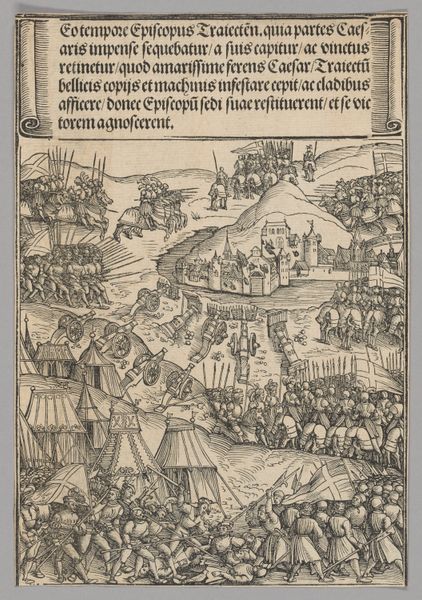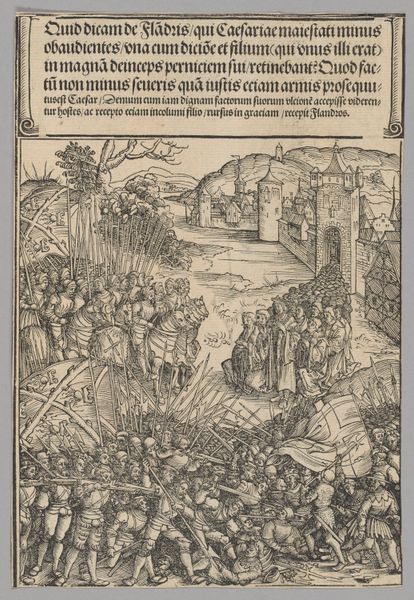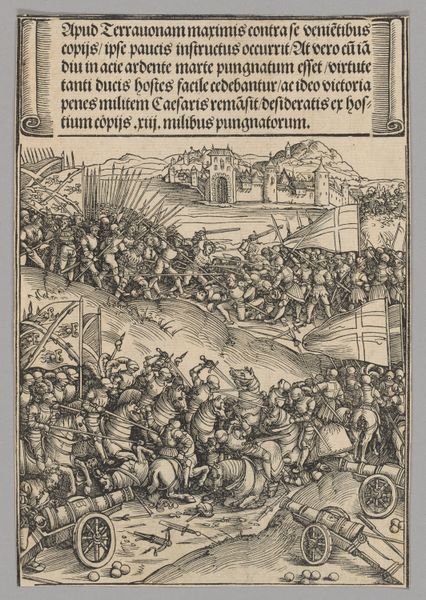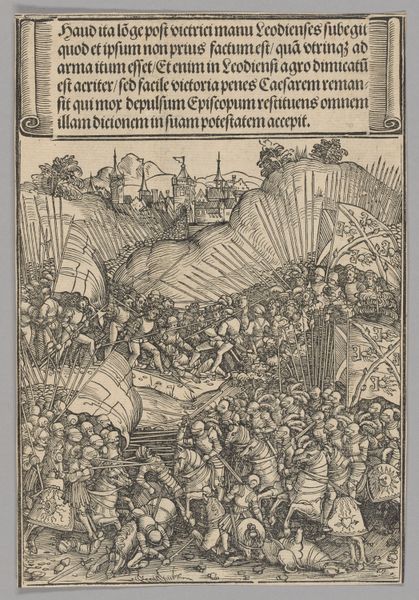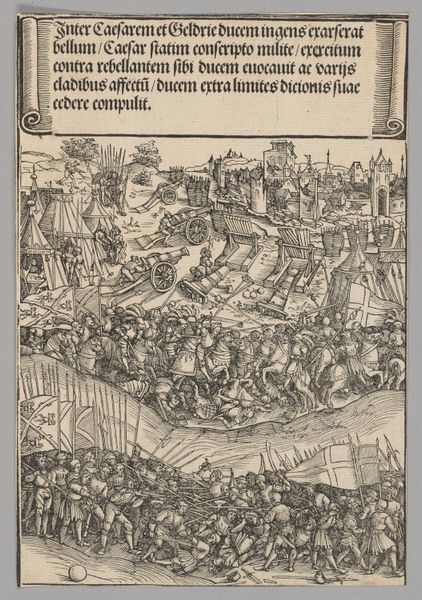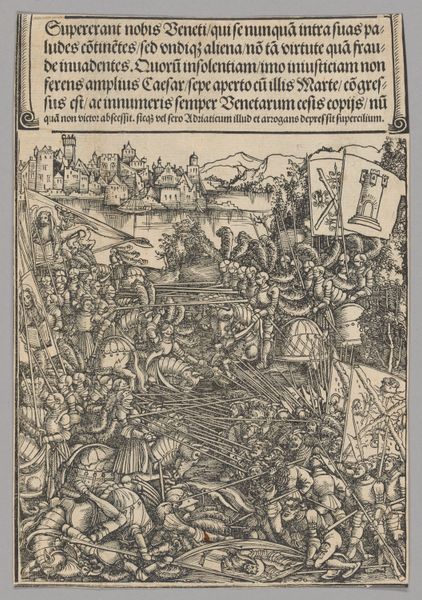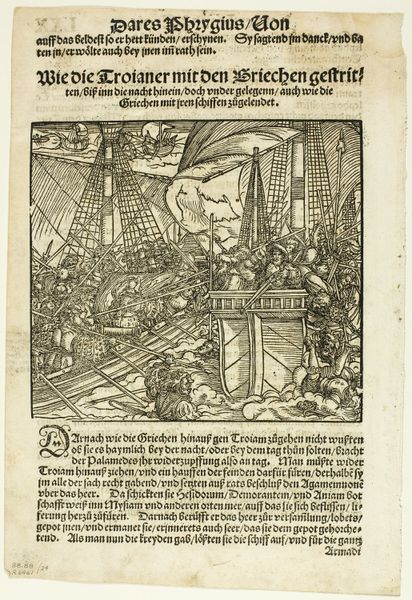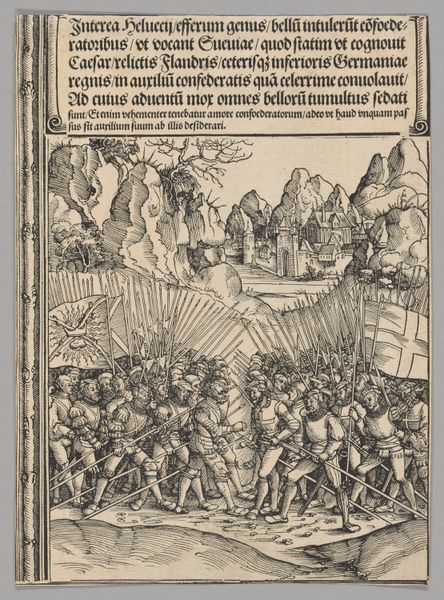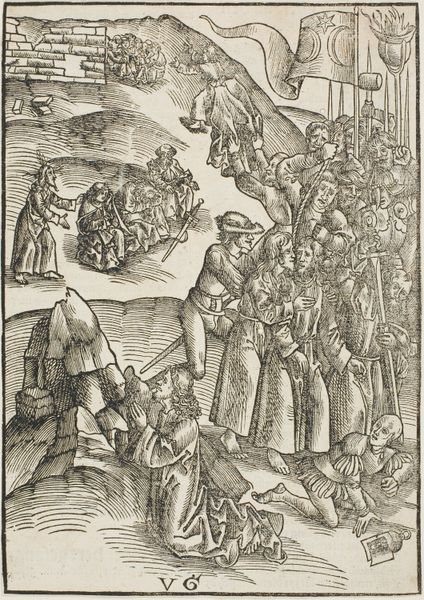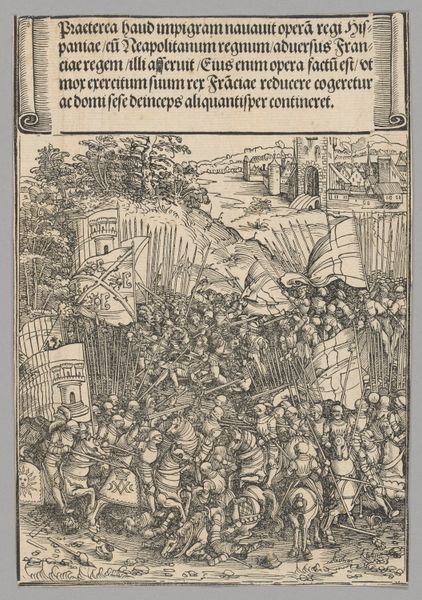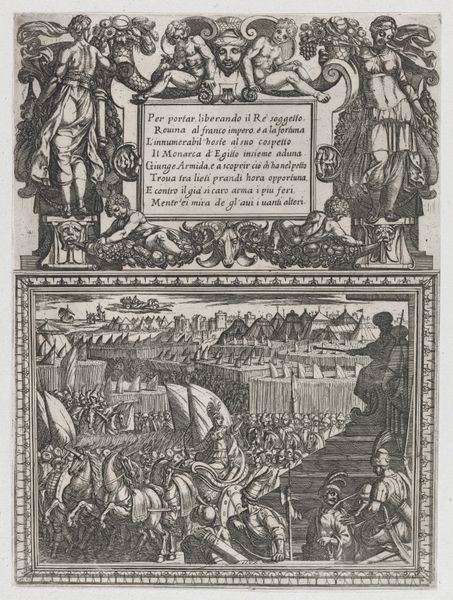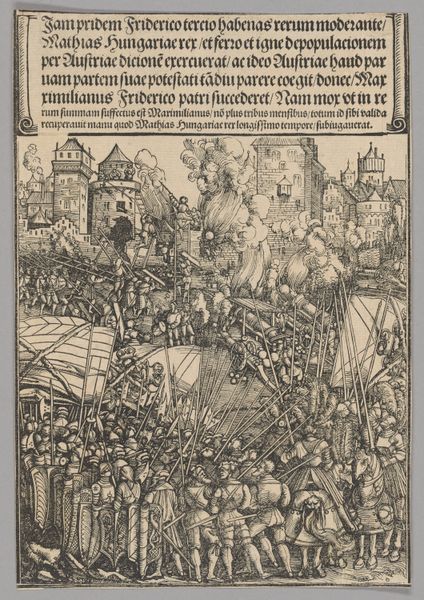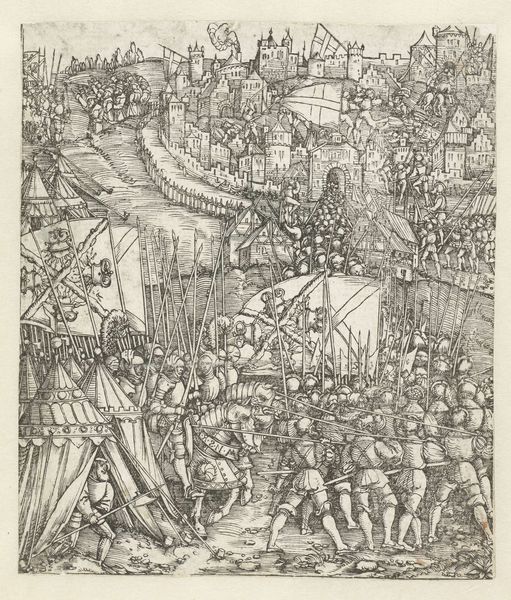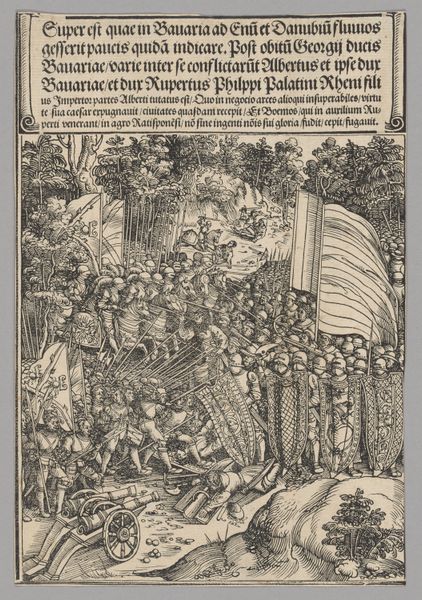
Capitulation of a French City, plate 12 from Historical Scenes from the Life of Emperor Maximilian I from the Triumphal Arch c. 1515 - 1520
0:00
0:00
drawing, print, paper, ink, woodcut
#
drawing
#
medieval
#
narrative-art
# print
#
landscape
#
paper
#
ink
#
woodcut
#
cityscape
#
history-painting
Dimensions: 222 × 150 mm
Copyright: Public Domain
This is a woodcut by Wolf Traut, part of a series celebrating Emperor Maximilian I. Notice the clear visual dichotomy: the city surrenders, its figures humbled, juxtaposed against the military might displayed by the cannons and tents. The act of surrender, laden with complex symbolism, echoes through art history. Think of ancient Roman reliefs depicting defeated enemies, or even earlier, Mesopotamian depictions of conquered cities. This motif transcends mere historical record; it taps into a primal understanding of power, dominance, and submission. The cannons here also serve as potent symbols, linking back to images of thunderbolts wielded by Zeus. The cannon’s destructive power and the deep awe it inspires in the viewer echo the fear once reserved for gods. Yet, unlike Zeus’s thunderbolts, which signal divine justice, the cannons symbolize worldly power—a shift demonstrating how cultural symbols evolve, reflecting new human capabilities. Such images imprint themselves on our collective memory, continually shaping our perception of authority and conflict across generations.
Comments
No comments
Be the first to comment and join the conversation on the ultimate creative platform.
